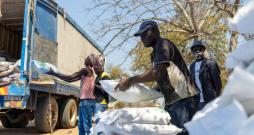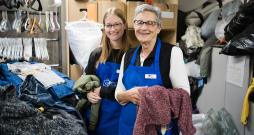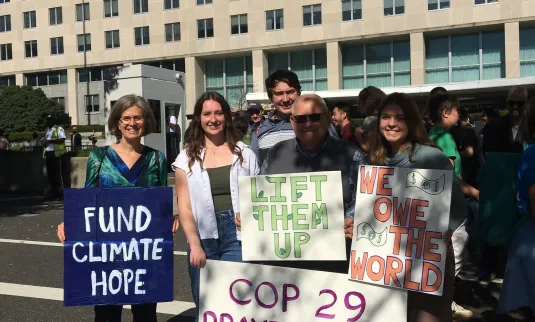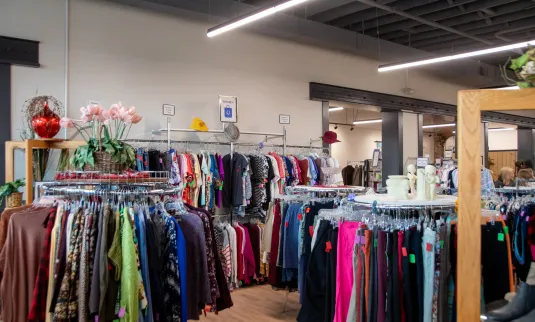Homegrown climate action in Nepal
MCC partners in rural Nepal are helping farmers cultivate economic security and stay close to home, despite the challenges climate change brings.
Harmony hums throughout Ishwor Man Magar’s farm in Kerabari Rural Municipality, Morang District, Nepal.
He feeds the roots of his asparagus plants to his cow so that she produces more milk, and thus more income for his family. The cow also makes the manure that fertilizes crops like his macadamia nut trees. These trees softly shade his coffee and strawberry plants. When the strawberry season is over, he and other young adults will sell the leftover shoots to neighbors, so that they can start fruitful fields of their own.
Ishwor Man Magar calls this land, located amid rolling, forested hills, “Funcha Agriculture Farm.” It is named after his 15-month-old son, Funcha. While he has seen the challenges that climate change has brought for farmers in his community, he has also found a way to grow crops right where he is, right where his wife, Hima Magar, and their child are.

How climate change leads to migration
While at 20 years old, Ishwor Man Magar runs a thriving farm in his own backyard, he once faced the choice that many from the Morang District, and other rural parts of Nepal, face: stay at home, where jobs are limited, or migrate for work. In the past two decades, residents, particularly young men, have increasingly opted to leave. Ishwor Man Magar, too, left for a time, heading to India, despite the hardships it brought. “I was just 15 and working as a salesman. And I had no citizenship card, no passport, nothing.”
Durga Sunchiuri, program coordinator for MCC Nepal, cites climate change as one of the main reasons for this migration. Out of 185 countries studied through the Notre Dame Global Adaptation Initiative, Nepal is the 51st most vulnerable to climate change. Changing weather patterns will likely have the greatest impact in rural areas, exacerbating existing socioeconomic divides. (According to the World Bank, 33% of rural Nepal residents experience multidimensional poverty, versus 7% of people in urban areas.)
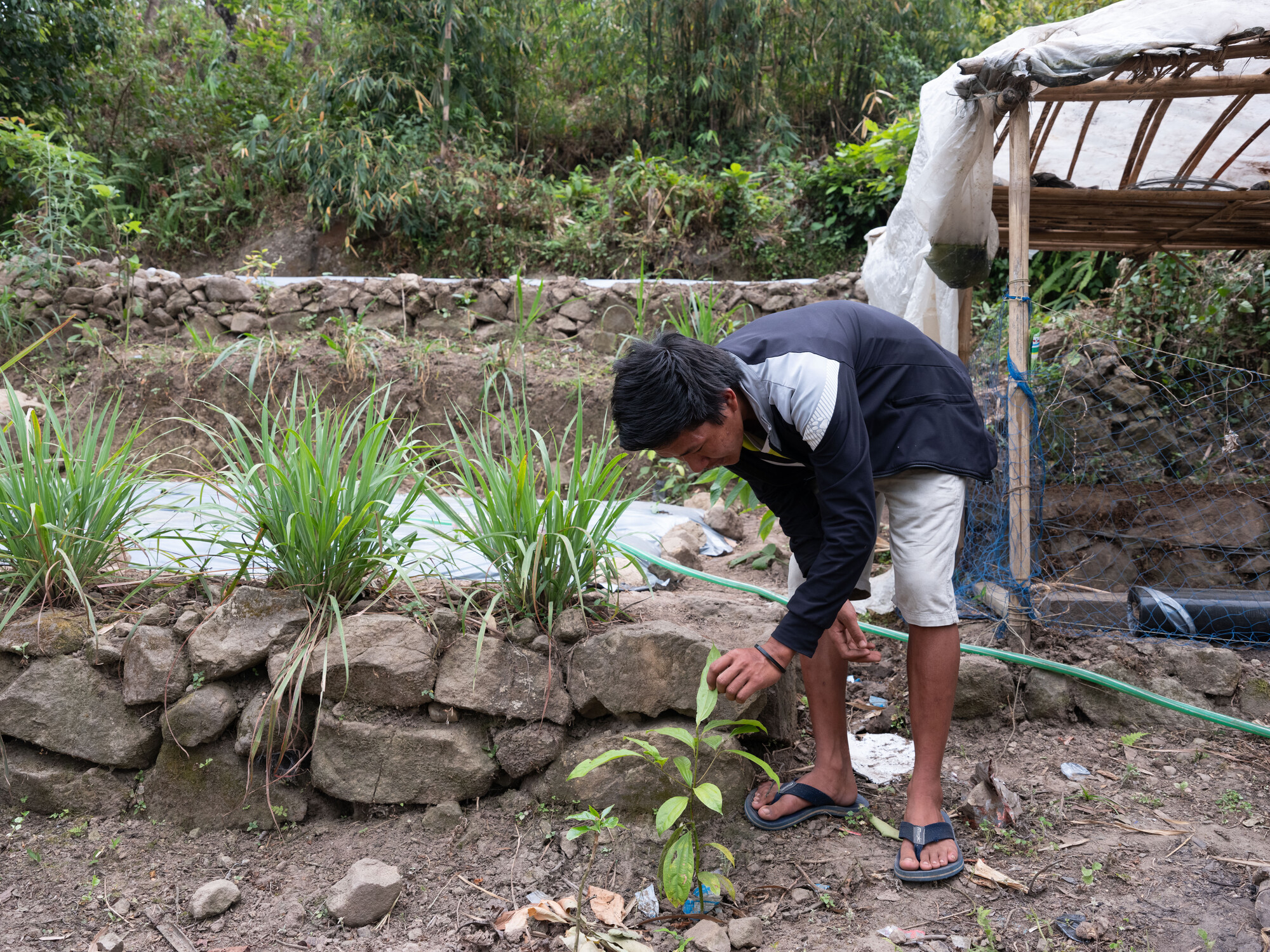
In the Himalayan foothills, where Ishwor Man Magar lives, changing weather patterns have resulted in longer dry seasons, and therefore shorter growing seasons. Pests have become a bigger problem, and farmers find themselves cutting into their profits to buy more pesticides. As young people see seasoned farmers’ struggles, they often decide that farming is not a viable career.
Helping farms flourish in the foothills
MCC partner Hilly Rural Development Organization of Northern Morang (HRDON) is showing young adults in the area a new, climate-minded way of farming.
Through its Youth Empowerment and Eco-Entrepreneurship Project (YEEP), young adults like Ishwor Man Magar are learning about climate change and how to adapt to it. Participants are trained in topics like sustainable agriculture, raising livestock and addressing social issues in the community.
Ishwor Man Magar strategically chooses the crops he grows, and their placement on the farm, so that they can offer each other nutrients and protection from the sun. By planting a variety of species, he’s increased his ability to bounce back if one crop fails. And to further diversify his income, he borrowed money from HRDON to buy a cow.
Ishwor Man Magar strategically chooses the crops he grows, and their placement on the farm, so that they can offer each other nutrients and protection from the sun. By planting a variety of species, he’s increased his ability to bounce back if one crop fails. And to further diversify his income, he borrowed money from HRDON to buy a cow.
“I feed the cow and the cow gives me milk,” he says. “So it’s a good investment.” But other YEEP participants in his community were at first hesitant to invest in cows of their own. Even his longtime friend, 21-year-old Puja Magar, who studied animal science, wasn’t sure at first. She and others in the group were worried that the cows might fall ill.

As her strawberry field grew, so did her confidence as a leader within her community. “ I used to be very shy. … I never had that courage to speak in front of people,” she says. Now, however, she can teach fellow farmers with ease and, through the social advocacy side of YEEP, has become more comfortable introducing herself to neighbors and asking them about their needs and dreams. “I started knowing more about my community, about households here … about the way people are living in this village.”
And Ishwor Man Magar has cherished the chance to earn income at home. “For me, being with my family, my wife and my child, it is good. If I go out [of the country] then if something happens, if they fall sick or if they need help, then I cannot come immediately running … to take care of my family.”
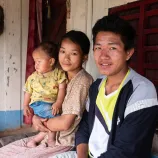

Being with my family, my wife and my child, it is good.”
Ishwor Man Magar
Farmer, husband and father
Now that his macadamia trees and strawberries have helped him put down roots in Kerabari, he plans to help others do the same. “What I see myself doing is being here in the community, helping people and doing my farming.”
Accompany young farmers today
Across Nepal’s Morang District, MCC partners like HRDON and Sahayogi Hatharuko Samuha (Group of Helping Hands, SAHAS) Nepal are equipping rural communities with the tools they need to adapt to climate change. In doing so, they’re keeping families together and helping women raise their voices.
But these communities can’t address climate change on their own ...
Will you help keep families together and empower them though climate action?
Countries like the U.S. and Canada are overall less vulnerable to climate change than Nepal, yet they emit an overwhelming amount of the greenhouse gases that are causing these changes. In 2020, the U.S. and Canada produced 13 and 13.6 metric tons of carbon dioxide per capita respectively. Nepal’s per-capita carbon emissions for the year sat at just 0.5 metric tons.
Still, individual households in the U.S. and Canada, likewise, can’t address climate change alone. Fostering climate action, and the peacebuilding that accompanies it, will also take widespread policy changes.
By urging your elected officials to invest in climate mitigation and adaptation, you can make a difference in the lives of families in Nepal, in your own communities and around the world.
You can lower your carbon emissions and promote change by:
Support climate adaptation today
Your generosity helps farms thrive and farming families stay together.
